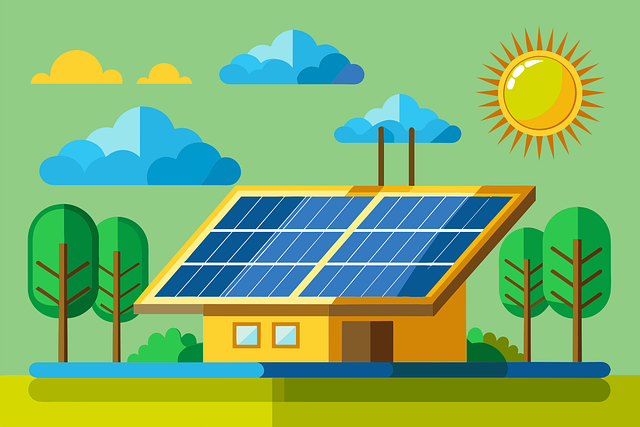In today’s dynamic world, accurate weather prediction is crucial for a multitude of reasons, ranging from agricultural planning to disaster preparedness. With the advent of artificial intelligence (AI) technology, weather forecasting has undergone a significant transformation, offering more precise and reliable predictions than ever before. In this blog post, we will explore how free AI tools are revolutionizing weather prediction and empowering individuals and organizations to make informed decisions.
Understanding Weather Prediction
Before delving into the realm of AI-powered weather forecasting, it’s essential to grasp the fundamentals of meteorology. Weather prediction involves analyzing various atmospheric parameters such as temperature, humidity, pressure, and wind patterns. Traditionally, meteorologists relied on numerical weather prediction models and historical data to forecast weather conditions. However, AI-driven approaches have introduced a paradigm shift in this field by leveraging advanced algorithms to process vast amounts of data and extract meaningful insights.
The Importance of Accurate Weather Prediction
The implications of accurate weather prediction extend across numerous sectors, including agriculture, transportation, aviation, and emergency management. For farmers, knowing when to plant crops or apply pesticides can significantly impact crop yields and profitability. Similarly, airlines and shipping companies rely on precise weather forecasts to optimize routes and minimize disruptions. Moreover, timely and accurate predictions play a critical role in mitigating the impact of natural disasters such as hurricanes, floods, and wildfires, saving lives and reducing economic losses.
Introduction to AI in Weather Forecasting
Artificial intelligence, particularly machine learning and deep learning techniques, has emerged as a game-changer in weather forecasting. Machine learning algorithms can analyze historical weather data to identify patterns and trends, enabling more accurate predictions of future weather conditions. Deep learning models, such as neural networks, excel at capturing complex relationships within atmospheric data, leading to enhanced forecasting accuracy. These AI-driven approaches complement traditional meteorological methods, offering a synergistic approach to weather prediction.
Free AI Tools for Weather Prediction
In the rapidly evolving world of technology, artificial intelligence (AI) is making a significant impact across various sectors. One area where AI has shown immense potential is in weather prediction. Accurate weather forecasts are crucial for agriculture, disaster management, travel, and daily planning. Here I, will explore some of the top free AI tools for weather prediction that are helping meteorologists and researchers make more accurate predictions.
1. IBM Watson Studio
IBM Watson Studio is a robust platform that allows users to build and deploy AI models. Although it’s a comprehensive tool with paid options, the free tier offers enough features to create weather prediction models.
Key Features:
- Access to weather data APIs.
- Integration with Jupyter Notebooks.
- Collaborative tools for data scientists.
- Support for various programming languages like Python, R, and Scala.
Use Case:
Users can leverage Watson Studio to process vast amounts of historical weather data, build machine learning models, and predict future weather conditions. Its integration with weather data APIs makes it a powerful tool for researchers and developers.
2. Google Earth Engine
Google Earth Engine is a powerful cloud-based platform designed for processing and analyzing geospatial data. It’s particularly useful for environmental monitoring and weather prediction.
Key Features:
- Access to petabytes of satellite imagery.
- Tools for analyzing and visualizing geospatial data.
- Python and JavaScript APIs for building custom applications.
Use Case:
Google Earth Engine can be used to analyze satellite imagery and detect weather patterns. It’s particularly valuable for predicting long-term weather trends and understanding climate change impacts.
3. Microsoft Azure AI
Microsoft Azure offers a suite of AI tools that can be used for weather prediction. While Azure has premium services, it also offers free tools like Azure Machine Learning that can be leveraged to build weather models.
Key Features:
- Azure Machine Learning Studio for building and training models.
- Access to weather datasets through Azure Open Datasets.
- Integration with other Azure services for data processing and visualization.
Use Case:
Azure AI tools can be used to create sophisticated weather prediction models by training them on large datasets. The integration with Azure Open Datasets provides easy access to historical weather data, making it easier to build accurate models.
4. Dark Sky API (Now part of Apple Weather)
Although Dark Sky’s standalone service was discontinued, Apple Weather offers a free API that provides hyperlocal weather data. It’s particularly useful for real-time weather prediction.
Key Features:
- Access to real-time weather data.
- Simple API integration with applications.
- High accuracy for short-term weather forecasts.
Use Case:
Developers can integrate the Apple Weather API into their applications to provide users with real-time weather updates. This is particularly useful for mobile apps and IoT devices that require up-to-the-minute weather information.
5. PyTorch
PyTorch is an open-source machine learning framework that is popular among AI researchers. It’s flexible and easy to use, making it a great tool for building custom weather prediction models.
Key Features:
- Strong support for deep learning models.
- Extensive community and documentation.
- Integration with other data processing tools.
Use Case:
PyTorch can be used to build neural networks that predict weather patterns based on historical data. It’s particularly useful for complex models that require deep learning techniques, such as predicting extreme weather events.
6. WEKA
WEKA is a free and open-source machine learning software that offers a collection of algorithms for data mining tasks. It’s particularly useful for beginners who want to experiment with different machine learning models.
Key Features:
- A comprehensive collection of machine learning algorithms.
- Easy-to-use interface.
- Support for data preprocessing, classification, regression, clustering, and more.
Use Case:
WEKA can be used to explore and analyze weather data, applying various machine learning algorithms to predict weather conditions. It’s a great starting point for those new to AI and weather prediction.
7. TensorFlow
TensorFlow is an open-source machine learning platform developed by Google. It’s widely used in the AI community for building and deploying machine learning models.
Key Features:
- Extensive libraries and tools for building AI models.
- Strong support for deep learning.
- Cross-platform support, including mobile and web.
Use Case:
TensorFlow can be employed to create sophisticated weather prediction models that take into account various factors like temperature, humidity, and wind speed. Its flexibility makes it suitable for both research and production environments.
Case Studies and Applications
Real-world applications of AI in weather forecasting abound, showcasing the transformative impact of these technologies. For instance, researchers have developed AI algorithms capable of predicting local weather patterns with unprecedented accuracy, aiding in resource allocation and disaster response planning. Moreover, AI-driven early warning systems have proven invaluable in predicting and mitigating the impact of natural disasters on vulnerable communities. In the agricultural sector, AI-powered weather forecasts enable farmers to optimize irrigation schedules and mitigate crop losses due to adverse weather conditions.
Challenges and Limitations
Despite the advancements in AI technology, weather prediction still faces challenges and limitations. Data availability and quality remain significant hurdles, particularly in regions with sparse or unreliable weather stations. Additionally, the computational resources required to train and deploy AI models for weather forecasting can be prohibitive for some users. Furthermore, the interpretability of AI models presents challenges in understanding the reasoning behind specific predictions, raising concerns about trust and transparency in decision-making processes.
Future Trends and Innovations
Looking ahead, the future of weather forecasting holds promise for further advancements in AI technology and innovation. Continued research and development efforts aim to address existing challenges and enhance the accuracy and reliability of weather predictions. Integration of Internet of Things (IoT) devices with AI algorithms enables real-time monitoring of weather conditions at a granular level, facilitating more precise forecasts and early warning systems. Collaborative initiatives among governments, research institutions, and technology companies are driving progress towards improving global weather forecasting capabilities.
Conclusion
In conclusion, the convergence of artificial intelligence and meteorology represents a significant milestone in the evolution of weather prediction. Free AI tools offer accessible resources for individuals and organizations seeking to leverage cutting-edge technology for accurate weather forecasting. By harnessing the power of AI, we can enhance our ability to anticipate and adapt to changing weather patterns, ultimately fostering resilience and sustainability in the face of environmental challenges. As we continue to explore the potential of AI in weather prediction, collaboration and innovation will remain key drivers of progress in this critical field.






